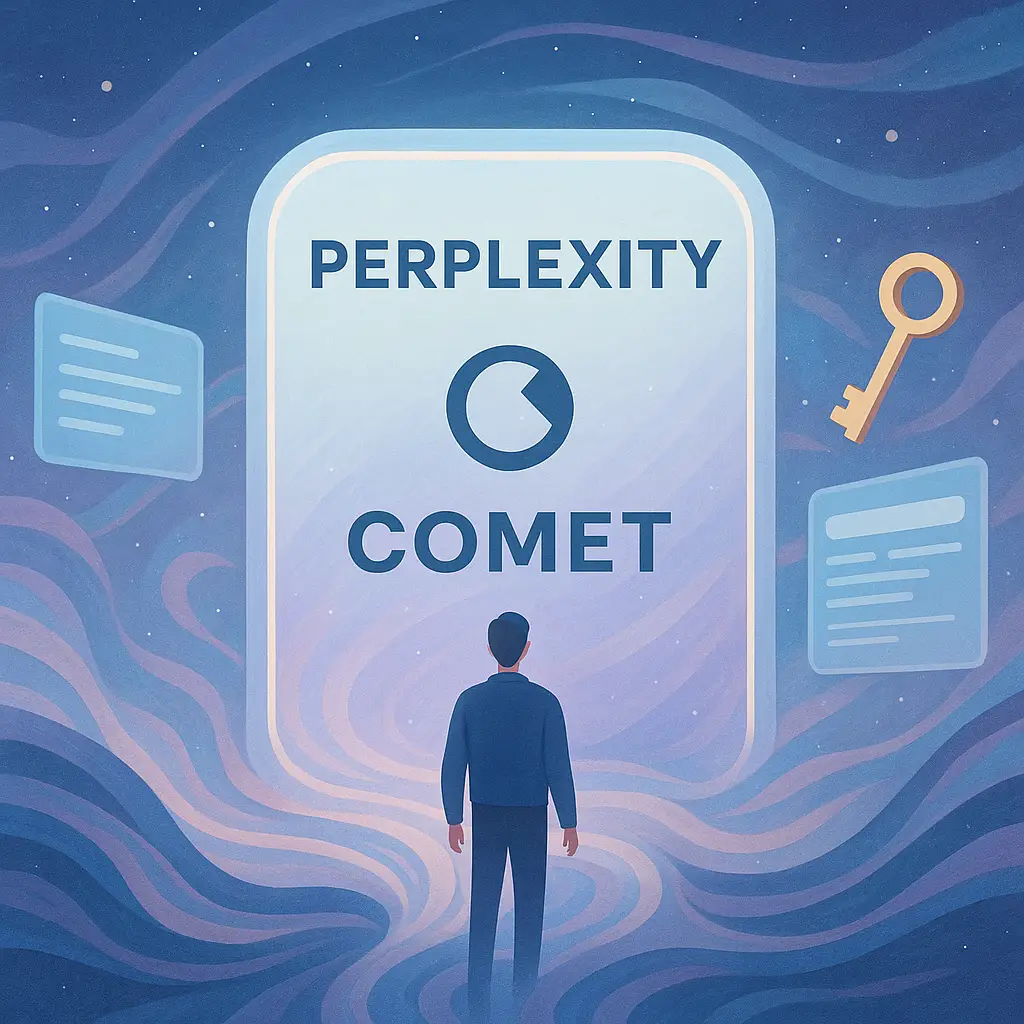
ChatGPT-4o Image Generation: Deep Dive
Table of Contents
- Introduction
- 📌 What Is the Image Generation Feature in GPT-4o?
- 🔧 How to Use GPT-4o's Image Generator: Step-by-Step
- 🧠 How to Write Better Prompts: Prompt Engineering for Visual Output
- 🔍 Use Cases by Industry & Role
- 🤔 What Makes GPT-4o Stand Out from Midjourney or DALL·E?
- ✏️ Image Editing: Uploads and Inpainting
- 🧪 Experimentation Corner: Creative Prompt Combos That Work
- 💡 Tips, Tricks & Gotchas
- 🌐 Real-World Applications: How Teams Are Using GPT-4o Today
- 🧴 A Word on Licensing and Usage Rights
- Frequently Asked Questions (FAQs)
- Final Thoughts
Introduction
In March 2025, OpenAI introduced something game-changing: native image generation in ChatGPT-4o. No add-ons. No plugins. Just a simple prompt, and out comes a beautifully rendered image—right from the chatbot you've been talking to.
If you've ever used Midjourney, DALL·E 2 or 3, or even Adobe Firefly to generate visuals, you'll notice how generation traditionally meant switching platforms. GPT-4o, however, breaks that mold in the most seamless and exciting way: by letting you chat and create visuals in one fluid interface.
So whether you're a content creator, designer, educator, marketer, or just a curious user—this guide will walk you through everything about this slick new feature. We'll unpack what it does, how to use it right, where it shines, and what to watch out for.
Generate Veo 3 JSON, Fast
Create structured, optimized JSON for Veo 3 in minutes. Clear fields. Correct syntax. Consistent results.
Open Veo 3 JSON Generator📌 What Is the Image Generation Feature in GPT-4o?
ChatGPT-4o's new image generator lets users describe images in natural language and receive fully rendered visual outputs—directly in the chat window.
In short: it's like having an art director, designer, and illustrator rolled into one digital assistant.
Unlike past ChatGPT integrations which layered DALL·E as a separate function (requiring tags like /imagine -style commands), GPT-4o's model natively handles multimodal content. That means it can generate, interpret, refine, and discuss images – all in the same flow.
⚙️ Key Capabilities at a Glance
| Feature | GPT-4o Highlights |
|---|---|
| Text Support in Images | Legible labels, signs, posters, and infographics with coherent typography |
| Scene Complexity | Handles 10–20 distinct elements with proper placement, color, attribute binding |
| Iterative Editing | Keeps visual memory of previous images to refine, transform, or stylize edits |
| Style Versatility | From photorealism to anime, pixel art, sketches, or vintage prints |
| Inpainting & Image Uploads | Edit/extend uploaded images; add, remove, or replace specific regions |
| Contextual Consistency | Maintains character, setting, and style across multiple prompts |
| Transparent Backgrounds | PNG-style outputs suitable for web, design, or overlay use |
| Aspect Ratio Control | Supports implied resizing (landscape, portrait, square) via description |
🔧 How to Use GPT-4o's Image Generator: Step-by-Step
Here's how to generate your first image in ChatGPT-4o—whether on the web, desktop, or mobile app.
Step 1: Open ChatGPT and Select GPT-4o
Make sure you're using a version that supports GPT-4o. Subscription tiers that currently include image generation:
- ChatGPT Plus
- ChatGPT Team or Enterprise
- Free tier users may have limited access depending on server capacity.
Step 2: Enter Image Mode
Look for the little image icon beside your chat input box. Clicking this toggles image creation mode.
If you don't see this icon, head to Settings > Beta Features > Image Generation and activate it if it's available.
Step 3: Type Your Prompt
This is where the magic begins. Type a natural language description of the image you want to generate.
Example Prompt:
"A cozy reading nook in a sunlit room, with a cat sleeping on a windowsill, in digital watercolor style."
Step 4: Submit and Wait
Processing usually takes 10–40 seconds. Images are rendered in stages, streaming into your view.
Step 5: Refine and Iterate
Didn't nail it the first time? Say:
"Can we make the cat black and add a steaming mug of tea on the table?"
The model will either edit the previous image or generate a new one while keeping your additions in mind.
🧠 How to Write Better Prompts: Prompt Engineering for Visual Output
High-quality outputs demand careful instructions. Below are tested strategies to help you prompt like a pro.
✅ Prompt Structure Checklist
| Prompt Component | Description |
|---|---|
| Subject | Who or what is in the image? "A cat", "A futuristic cityscape" |
| Scene Context | Where is it? "In a forest", "on Mars" |
| Style/Format | Art style, design style or medium? "Pixel art", "Watercolor on paper" |
| Color or Mood | How does it feel visually? "Dark & moody", "Pastel tones", "Vibrant" |
| Perspective/Layout | Close-up? Aerial? Wide? "Top-down view", "Poster format" |
| Inclusions/Labels | Specific elements or labels. "Include text 'Sale Today' in bold red" |
🎨 Examples of Strong Prompts
-
Marketing Banner
"A Black Friday online shopping banner with a red background, bold white text '70% OFF Everything Today', featuring a shopping cart icon and smiling shoppers, flat design."
-
Children's Book Illustration
"A sleepy elephant hugging a star-shaped pillow under a glowing moon, illustrated in soft crayon style for a baby bedtime story."
-
Product Mockup
"Modern coffee mug on a wooden desk, white ceramic with a gold rim, steam rising, photographed in daylight."
🔍 Use Cases by Industry & Role
Let's explore who benefits from GPT-4o's image feature—and how.
🚀 For Marketers & Brands
| Use Case | Description |
|---|---|
| Social Media Posts | Generate eye-catching Instagram or Twitter visuals with call-to-actions |
| Display Ads | Custom Google/Facebook-style banners with rendered text and product photos |
| Promo Flyers | One-prompt posters with brand names, discount labels and themed visuals |
🎨 For Designers & Creative Teams
| Use Case | Description |
|---|---|
| Mood Boards | Quickly assemble theme boards with styled renderings |
| Storyboards | Draft comic-style or illustrative frames for pitches or scripts |
| UX Concepts | Generate design mockups of UI screens, icons, login pages, and more |
🧑🏫 For Educators & Writers
| Use Case | Description |
|---|---|
| Illustrated Lessons | Visual diagrams for topics: "Photosynthesis cycle" or "DNA structure" |
| Student Engagement | Fun visuals to explain complex issues like "economy cycles" |
| Book Covers & Headers | Custom artwork and banners for eBooks or printed material |
🛒 For E-Commerce Owners
| Use Case | Description |
|---|---|
| Product Visuals | Stylized renders of theoretical or real products |
| Lifestyle Pictures | Scenes that show your product "in-use": slippers by the fireplace, etc. |
| Label Mockups | Try printed label designs directly on packaging renders |
🤔 What Makes GPT-4o Stand Out from Midjourney or DALL·E?
The Showdown: GPT-4o vs Midjourney vs Firefly
| Feature | GPT-4o | Midjourney | Adobe Firefly |
|---|---|---|---|
| Text Rendering in Images | ✅ Excellent | ❌ Often garbled | ✅ Good |
| Conversational Refinement | ✅ Chat-driven | ❌ Prompt-resubmit only | ❌ Tool-based edits |
| UI Simplicity | ✅ Built into ChatGPT UI | ❌ Discord Bot only | ✅ Adobe Creative Suite UI |
| Image Edits via Conversation | ✅ Yes | ❌ No | ✅ Yes (in tools) |
| Real-Time Context Memory | ✅ Maintains style & layout | ❌ Starts from scratch | ❌ Limited in canvas-based UI |
GPT-4o excels at coherent illustrations with usable text, lives inside a conversational interface, and maintains context—which makes it extremely accessible for non-designers.
✏️ Image Editing: Uploads and Inpainting
GPT-4o doesn't just create images—it can edit existing ones.
How It Works:
- Upload Image → Drag and drop or click upload icon
- Instruction Prompt → Describe what to change
Example: "Replace background with a beach scene" or "Add a red balloon in the top-left corner." - Generate → GPT-4o displays the revised scene, consistent with original look.
This makes it function like a lite Photoshop—right in your chat window.
🧪 Experimentation Corner: Creative Prompt Combos That Work
Need some inspiration? Try these:
| Scenario | Prompt Idea |
|---|---|
| Movie Poster | "Epic sci-fi movie poster with title 'Galactic Rift', spaceship silhouette, purple nebula background" |
| T-Shirt Design | "Cartoon octopus holding coffee mugs, text says 'Need more arms for Mondays', white background" |
| Event Card | "Wedding invitation card, floral watercolor design, names 'Sophie & Raj', soft pinks and beiges" |
| YouTube Thumbnail | "Tech explainer thumbnail with person pointing to a graph, big text 'AI is Taking Over?!'" |
| Tattoo Concept | "Minimalist fox curled into a circle, single black line art with fine detailing" |
💡 Tips, Tricks & Gotchas
Here's where you outperform casual users 👇
⚡ Pro Tips
- Prefer Simple Scene Layouts first, then build complexity through refinement.
- Use actionable feedback like: "Make background blue", "Add shadows", "Use comic style."
- Mention negative space if needed: "Leave empty space in top-right corner for logo overlay."
❌ Pitfalls to Avoid
| Mistake | Better Approach |
|---|---|
| "Make it cool and interesting" | Instead say "neon colored skyline with fog at night, Blade Runner style" |
| "Draw a dog" | "Photorealistic Labrador Retriever sitting on grass, side profile view" |
| Vague formatting | Be precise: "Text across bottom in bold, uppercase letters, white color" |
| Too many objects | Split complex scenes into parts or list structured descriptors |
🌐 Real-World Applications: How Teams Are Using GPT-4o Today
- Startups are mocking up UI concepts, MVP logos, and ad creative—within minutes.
- Teachers are generating storybook-style images for class worksheets.
- Bloggers and content teams are building image-rich articles, skipping stock sites.
- E-commerce brands visualize how new products might look before manufacturing proofs.
- Design agencies use it as a sketchpad – churning fast iterations to client feedback.
🧴 A Word on Licensing and Usage Rights
As per OpenAI's Terms of Use:
- You may use the generated images commercially under standard usage terms.
- Generated content belongs to the user and may be modified, published, or distributed.
- You must not use the tool to create misleading content (deepfakes), hate speech visuals, or violate IP/copyright.
"With great power comes great responsibility." – Yes, even in AI art.
Final Thoughts
ChatGPT-4o's new image generation feature is much more than fun art generation—it's a powerful productivity booster and creativity amplifier. In a world increasingly dependent on visual communication, the ability to whip up a usable image from a few well-worded sentences saves countless hours and bridges the gap for non-designers.
It doesn't require training in Photoshop.
It doesn't demand a Discord server like Midjourney.
And it doesn't sacrifice idea fidelity when generating mockups that include real text.
If you haven't started using GPT-4o's image generator yet, now's the time to experiment. Use it to mock, sketch, publish—or just play. The visual frontier of conversational AI is here. Grab your prompt and paint with words.
Frequently Asked Questions
Share this article
Related Articles

ChatGPT Go Free in India: Unlock AI Power 2025!
Explore how OpenAI's ChatGPT Go free offer in India is set to transform AI accessibility, from enhanced features to market impact and strategic benefits.

Comet Invite: 1-Month Free Perplexity Pro
Discover how to secure a guaranteed invite to Comet with free 1-month access to Perplexity Pro without a waitlist or credit card. Your comprehensive guide to the next generation in AI-powered browsing.

Earn Money with Comet India: 12 Tips
Discover effective strategies to earn money using Comet in India. This guide covers 12 hidden automation techniques, real-user tactics, and essential insights for pro users.
